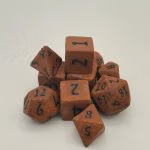Mastering the Aasimar Paladin: A Divine Guide for D&D Enthusiasts
If you’re new to Dungeons & Dragons (D&D) and are looking to create a character that combines divine power, noble purpose, and celestial heritage, then the Aasimar Paladin is an excellent choice. In this guide, we will delve into how to play an Aasimar Paladin, offering tips and tricks for beginners to make your journey through the realms both exciting and rewarding.
Why Choose an Aasimar Paladin?
An Aasimar Paladin brings a unique combination of celestial grace and martial prowess to the table. With their inherent ability to harness divine energy and their strong sense of justice, Aasimar Paladins are natural leaders and protectors in any adventuring party.
Celestial Heritage
Aasimar are celestial beings blessed with the power of the divine. This heritage grants them several racial traits, including resistance to necrotic and radiant damage, and the ability to heal wounds. These traits make them durable and versatile on the battlefield.
The Paladin Class
Paladins are holy warriors who swear oaths to uphold justice and righteousness. They possess a mix of combat skills and divine magic, making them formidable in both melee and support roles. As a Paladin, you’ll have access to powerful abilities like Divine Smite, Lay on Hands, and various auras that benefit your allies.
Creating Your Aasimar Paladin
Step 1: Choose Your Aasimar Subrace
There are three subraces of Aasimar: Protector, Scourge, and Fallen. Each offers different abilities and traits that can complement your Paladin’s playstyle. For beginners, the Protector Aasimar is a great choice due to their healing abilities and radiant energy.
Step 2: Select Your Paladin Oath
Paladins take an oath that shapes their abilities and role in the game. Common oaths include the Oath of Devotion, Oath of the Ancients, and Oath of Vengeance. The Oath of Devotion is a solid choice for new players, offering a balanced mix of offensive and defensive capabilities.
Step 3: Allocate Your Ability Scores
Paladins benefit from high Strength, Constitution, and Charisma. Strength enhances your melee attacks, Constitution boosts your hit points, and Charisma powers your spellcasting and class features. A typical ability score distribution might look like this: Strength 16, Constitution 14, Charisma 14, Dexterity 12, Wisdom 10, and Intelligence 8.
Tips and Tricks for Beginners
1. Utilize Your Healing Abilities
Don’t forget to make use of your Lay on Hands and Healing Light abilities. These can be lifesavers in tough battles and can help keep your party in fighting shape.
2. Master Divine Smite
Divine Smite allows you to expend spell slots to deal extra radiant damage on a successful melee attack. This is a key ability for maximizing your damage output, especially against undead and fiends.
3. Use Your Auras Wisely
As you level up, you’ll gain access to auras that provide various benefits to you and your allies. Position yourself strategically to ensure your party members are within the aura’s range to take full advantage of these buffs.
4. Roleplay Your Character
Embrace the roleplaying aspect of your Aasimar Paladin. Develop a backstory that explains your celestial heritage and your reasons for taking up the Paladin’s oath. Engaging with your character’s motivations and personality can make the game more immersive and enjoyable.
Conclusion
Playing an Aasimar Paladin in D&D offers a rich and rewarding experience, combining the power of the divine with the strength of a seasoned warrior. By following this guide and keeping our tips and tricks in mind, you’ll be well on your way to mastering this celestial champion and leading your party to victory.
Happy adventuring!
Author: Andrew Wilson
-
Frost Bite Ceramic Dice Set
Select options This product has multiple variants. The options may be chosen on the product page -
Assorted 6d6 Ceramic Dice Set
Select options This product has multiple variants. The options may be chosen on the product page -
Dwarven Deep Iron Ceramic Dice Set
Select options This product has multiple variants. The options may be chosen on the product page



